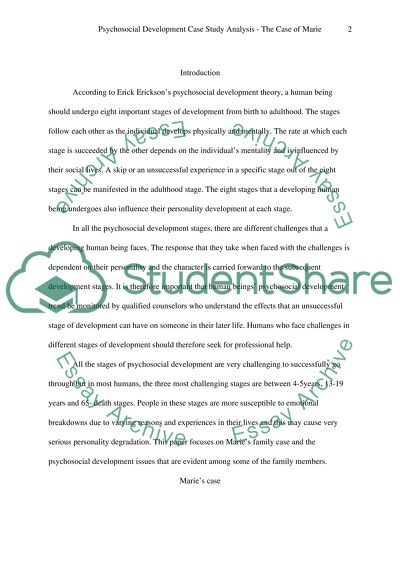Cite this document
(“Essay on Psychosocial Development Example | Topics and Well Written Essays - 1750 words”, n.d.)
Retrieved from https://studentshare.org/psychology/1453272-psychosocial-development-case-study-analysis-the
Retrieved from https://studentshare.org/psychology/1453272-psychosocial-development-case-study-analysis-the
(Essay on Psychosocial Development Example | Topics and Well Written Essays - 1750 Words)
https://studentshare.org/psychology/1453272-psychosocial-development-case-study-analysis-the.
https://studentshare.org/psychology/1453272-psychosocial-development-case-study-analysis-the.
“Essay on Psychosocial Development Example | Topics and Well Written Essays - 1750 Words”, n.d. https://studentshare.org/psychology/1453272-psychosocial-development-case-study-analysis-the.


